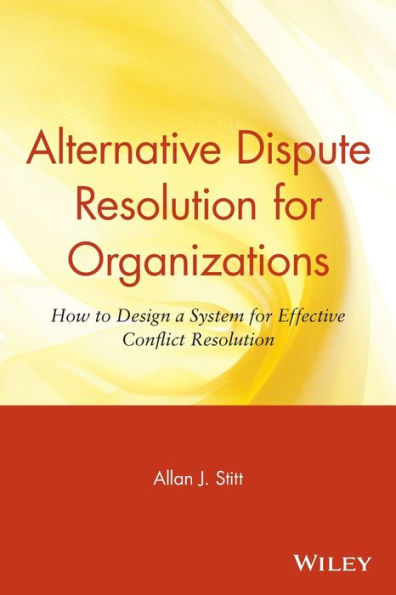Table of Contents
Preface xv
Acknowledgements xix
Chapter 1: Introduction to ADR 1
Dealing With Conflict 3
Why not ignore conflict? 4
Why not litigate? 4
Setting Up A Conflict Resolution System 6
Existing Systems 7
What if you don’t have a system? 8
Do small organizations need ADR systems 9
ADR Systems Design 9
When is Systems Design appropriate? 10
Goals For An ADR System 11
Reduce Time and Cost 11
Improve or Maintain the Relationship 12
Satisfactory Outcome 13
Deal with Emotions 13
Avoid Future Disputes 13
What is ADR? 14
The Types of ADR 15
Conflict Prevention 15
Partnering 15
Self-help 15
Negotiation 16
Mediation 16
Conciliation 16
Facilitation 16
Med/Arb (Mediation/Arbitration) 16
Mini-trials 17
Early Neutral Evaluation 17
Arbitration 17
Litigation 18
Incorporating ADR Into The System— The “Direct” Approach 18
Diagnosis 18
Interests 19
Rights 19
Exits and re-entries 19
Creativity 20
Training and evaluation 20
Summary 23
Chapter 2: Diagnosis 25
The System Design Team 25
Any Recommendations Should Improve The Existing System 27
Who To Consult? 28
How To Obtain Information? 30
Summary 35
Chapter 3: Diagnosis of the Organization 41
What Is The Culture of the Organization? 41
What Is The Communication Structure In The Organization? 44
How Technologically Advanced Is The Organization? 45
What Resources Are Available? 46
Summary 51
Chapter 4: Diagnosis of the Disputes 53
Is The Organization’s Goal To Resolve Internal Or External Disputes? 54
What Kinds Of Disputes Is The Organization Having? 55
Factual 55
Technical 56
Interpersonal 56
Legal 57
Difference of Opinion 57
What Has Been Triggering The Disputes? 58
How Does The Company Find Out About Disputes? 59
What Kinds Of Disputes Are Likely To Occur In The Future? 60
How Many Disputes Are There? 60
If there are many disputes 61
If there are few disputes 62
How Many Disputants Are There? 63
Are Certain Individuals Commonly Involved In Disputes? 63
How Quickly Do Disputes Need To Be Resolved? 64
Are The Disputes Cyclical? 65
Is Relationship Important To The Disputing Parties? 66
Is Precedent Important? 67
Is Confidentiality Important? 68
Summary 74
Chapter 5: Dispute Resolution Requirements 75
What Is The Mandate Of The Design Team? 75
What Processes Have Been Used To Resolve Disputes In The Past? 76
Preserving Assets 77
Should External Or Internal People Be Used To Help Resolve The Disputes? 78
Summary 81
Chapter 6: Interests 83
Power And Rights 84
What Are Interests? 85
Why Use Interest-Based Approaches First? 87
Summary 90
Chapter 7: Interest-Based Negotiation 91
The Seven Elements Of Principled Negotiation 92
Alternatives 92
Interests 94
Options 95
Legitimacy 97
Communication 98
Relationship 100
Commitment 102
Incorporating Principled Negotiation Into The ADR System 102
Summary 105
Chapter 8: Interest-Based Mediation 107
The Mediation Process 108
Setting the Table 108
Storytelling 111
Determining Interests 112
Determining the Issues 113
Brainstorming Options 114
Selecting an Option 114
Closure 115
Moving from Stage to Stage 116
Caucusing 117
The One Text 118
Selecting Appropriate Mediators 119
Integrating Mediation Into An ADR System 120
Summary 123
Chapter 9: Rights 125
Non-Binding Processes 126
Rights-Based Mediation 126
Early Neutral Evaluation 127
Fact Finding 127
Mini-trials 128
Judicial Mini-trials 128
Private Mini-trials 129
Binding Processes 130
Courts and Tribunals 130
A Superior Decides 130
Arbitration 131
Processes That Combine Interest-Based And Rights-Based Approaches 133
Mediation/Arbitration (Med/Arb) 134
Summary 137
Chapter 10: Exits and Re-entries 139
Loopbacks 140
Cooldowns 141
Summary 144
Chapter 11: Creativity 145
Summary 154
Chapter 12: Training and Evaluation 155
Education 155
Skills Training 157
Interest-Based Negotiation Training 158
Other Training 158
Evaluation 159
Go Back to Stakeholders 159
Commencing with a Pilot Project 160
The Assessment 160
Tools for Assessment 161
Assessment of Mandatory Mediation in Ontario 162
Summary 165
Chapter 13: ADR In External Disputes 173
Setting Up A System Before The Dispute Arises 174
Multi-Step ADR Clause 174
Negotiation 175
Mediation 175
Other Non-Binding Processes 176
Arbitration 177
Procedure is Only Procedure to Be Used 178
Length of the ADR Clause 179
Independent Organizations That Can Assist With Inter-organizational Disputes 179
Summary 181
Chapter 14: Concluding Thoughts 183
Appendix A: Sample Multi-Step ADR Clause 185
Appendix B: Procedure Manual for Mediation of Credit Disputes Between Bank of Montreal and Small- and Medium-Sized Enterprises (SME’s) 193
Appendix C: Ontario Human Rights Commission Mediation Procedures Manual 205
Bibliography 217



